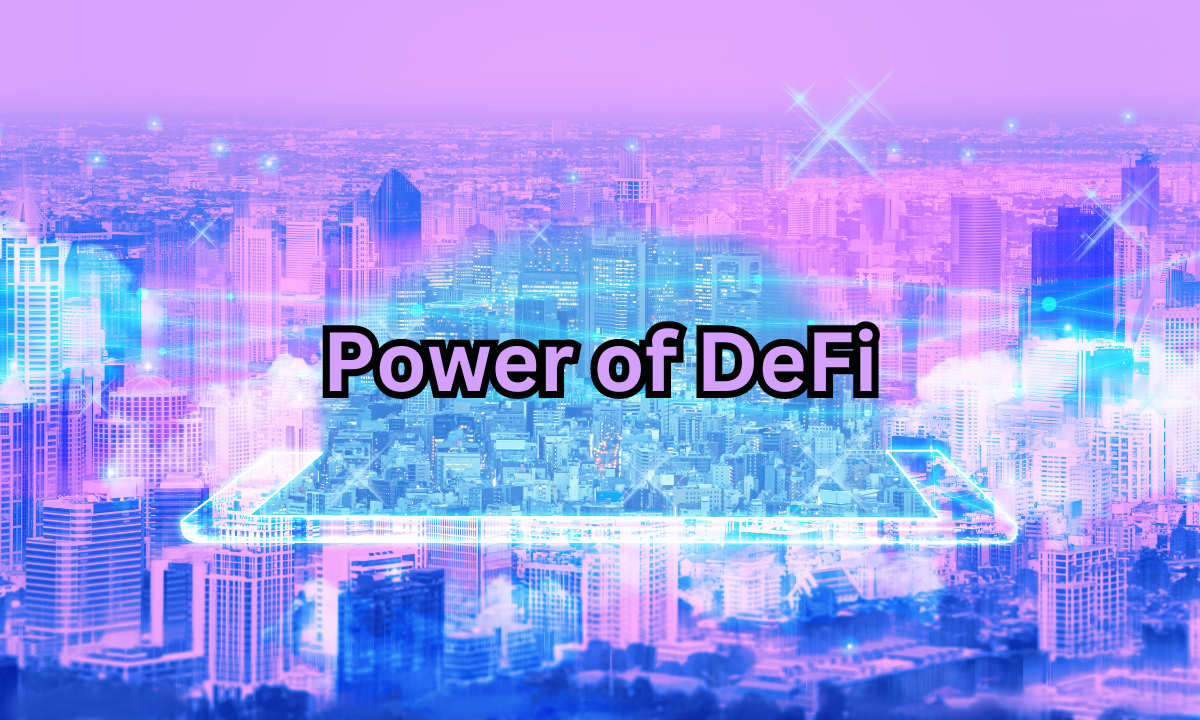The Power of DeFi: Transforming Financial Systems – Insights from Investors Collective
 Crypto Chronicles
Crypto Chronicles
Decentralized Finance (DeFi) is reshaping the landscape of financial systems as we know them. In recent years, this revolutionary sector has emerged from the fringes of cryptocurrency innovation to become a cornerstone of the modern financial world. DeFi platforms offer an array of services that traditionally required intermediaries, now available through smart contracts on blockchain networks. For crypto investors and enthusiasts, understanding DeFi's potential and its impact on the global financial system is crucial. This article, crafted for Investors Collective, will delve into the transformative power of DeFi, exploring its core components, benefits, and future prospects.
The Core Concepts of DeFi
DeFi represents a significant shift from traditional financial systems by leveraging blockchain technology to create decentralized financial services. Unlike conventional finance, which relies on banks and intermediaries, DeFi platforms use smart contracts to automate and secure transactions. These smart contracts are self-executing contracts with the terms directly written into code. They eliminate the need for trust between parties, reducing costs and increasing efficiency.
One of the most compelling aspects of DeFi is its ability to democratize financial services. By removing barriers to entry, DeFi platforms enable anyone with an internet connection to access financial tools and services. This democratization is particularly valuable in regions with limited access to traditional banking infrastructure. For investors, DeFi opens new avenues for earning, trading, and managing assets without relying on traditional financial institutions.
DeFi Lending and Borrowing: A New Era of Financial Flexibility
How DeFi Lending Platforms Work
DeFi lending platforms allow users to lend their cryptocurrencies and earn interest. These platforms operate on decentralized protocols that match lenders with borrowers. Unlike traditional lending systems, which often require credit checks and lengthy approval processes, DeFi lending is facilitated through smart contracts. These contracts ensure that the terms of the loan are automatically enforced, reducing the risk of default.
Borrowers, on the other hand, can access funds quickly without the need for traditional credit checks. Collateral is usually required to secure the loan, which protects lenders from the risk of default. DeFi lending platforms offer a range of interest rates and loan terms, providing flexibility and competitive returns for both lenders and borrowers.
Benefits and Risks of DeFi Lending
The primary benefits of DeFi lending include increased accessibility, lower costs, and faster transactions. Users can lend and borrow assets with ease, often at more favorable terms than those offered by traditional banks. Additionally, DeFi platforms typically have lower fees, making them an attractive option for many users.
However, DeFi lending also carries risks. Smart contracts are vulnerable to bugs and exploits, which can result in significant losses. Moreover, the volatility of cryptocurrencies can impact the value of collateral and loan terms. It is essential for users to conduct thorough research and understand the risks before participating in DeFi lending.
Decentralized Exchanges (DEXs): Redefining Trading
The Rise of Decentralized Exchanges
Decentralized exchanges (DEXs) are another significant component of the DeFi ecosystem. Unlike centralized exchanges that require users to deposit funds into a central account, DEXs allow users to trade directly from their wallets. This peer-to-peer trading model enhances security and reduces the risk of hacking and fraud.
DEXs utilize automated market makers (AMMs) instead of order books to facilitate trades. AMMs use liquidity pools to determine asset prices, allowing users to trade without the need for traditional market makers. This model provides greater liquidity and flexibility, enabling users to trade a wide range of assets.
Advantages and Challenges of DEXs
The advantages of DEXs include increased security, privacy, and control over funds. Users retain full ownership of their assets and can trade without relying on intermediaries. DEXs also offer a broader range of trading pairs and innovative trading features that are not always available on centralized exchanges.
Despite these benefits, DEXs face several challenges. The user experience can be less intuitive compared to centralized platforms, and liquidity can vary significantly between different exchanges. Additionally, the lack of regulatory oversight raises concerns about compliance and protection for users. It is crucial for investors to weigh these factors when choosing a trading platform.
Yield Farming and Staking: Maximizing Returns
Exploring Yield Farming
Yield farming involves providing liquidity to DeFi protocols in exchange for rewards. Users can earn interest or additional tokens by staking their assets in liquidity pools. This process helps to enhance the liquidity of DeFi platforms and offers users the opportunity to earn substantial returns on their investments.
Yield farming can be highly profitable, but it also involves risks such as impermanent loss, where the value of staked assets fluctuates. Additionally, the complexity of yield farming strategies requires a thorough understanding of the underlying protocols and their risks.
The Role of Staking in DeFi
Staking is another way to earn rewards in the DeFi ecosystem. Users lock their assets in a staking contract to support the operation and security of a blockchain network. In return, they receive rewards in the form of additional tokens or transaction fees.
Staking offers a more stable return compared to yield farming, but it still carries risks related to network performance and protocol changes. Investors should carefully evaluate the staking options and associated risks before participating.
FAQs Section
What is DeFi?
DeFi, or Decentralized Finance, is a sector within the cryptocurrency industry that provides financial services through decentralized platforms, eliminating the need for traditional intermediaries.
How do DeFi lending platforms work?
DeFi lending platforms use smart contracts to facilitate loans between lenders and borrowers without the need for traditional banks. Collateral is usually required to secure the loan, and interest rates are often competitive.
What are the benefits of using decentralized exchanges (DEXs)?
DEXs offer increased security, privacy, and control over funds by allowing users to trade directly from their wallets. They also provide access to a broader range of trading pairs and innovative features.
What are yield farming and staking in DeFi?
Yield farming involves providing liquidity to DeFi protocols in exchange for rewards, while staking involves locking assets in a contract to support a blockchain network and earn rewards. Both methods offer opportunities for earning returns but come with associated risks.
Conclusion
The transformative power of DeFi is evident in its ability to democratize and innovate financial systems. By leveraging blockchain technology and smart contracts, DeFi platforms offer new ways for individuals to access, manage, and grow their assets. From lending and borrowing to trading and earning rewards, DeFi presents exciting opportunities and challenges for investors. As the DeFi landscape continues to evolve, staying informed and understanding these dynamics is crucial for navigating the future of finance. Investors Collective remains committed to providing valuable insights and resources to help you thrive in this rapidly changing space.
Subscribe to my newsletter
Read articles from Crypto Chronicles directly inside your inbox. Subscribe to the newsletter, and don't miss out.
Written by

Crypto Chronicles
Crypto Chronicles
Crypto Chronicles: Delve into the vibrant world of cryptocurrency through exclusive stories and expert insights shared by the Hashnode community. Explore the latest trends, success stories, and innovative perspectives shaping the future of digital finance.